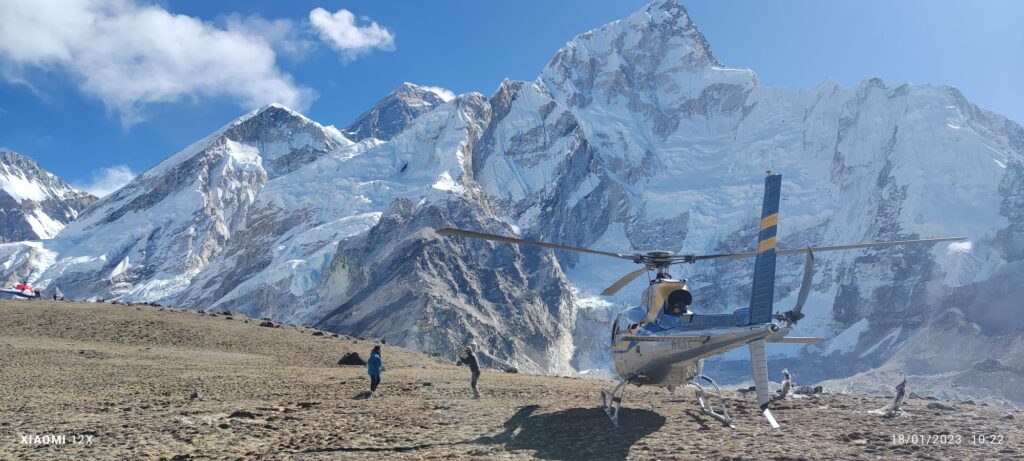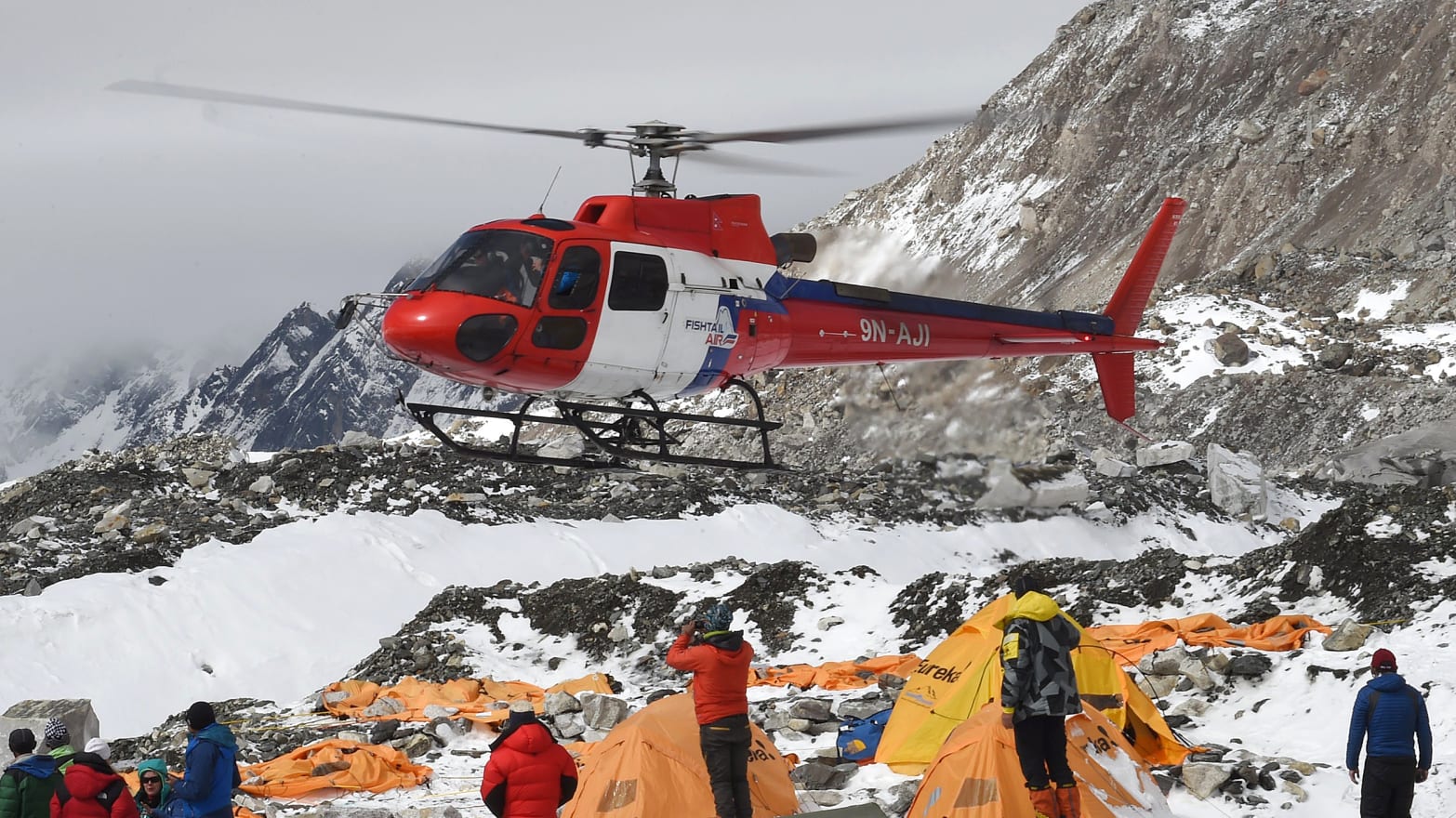The Everest Helicopter Tour is a bucket-list experience that combines the thrill of high-altitude aviation with the unparalleled beauty of the Himalayas. While trekking to Everest Base Camp (EBC) remains a popular adventure, this helicopter journey offers a faster, safer, and equally awe-inspiring alternative. Ideal for travelers with limited time, physical constraints, or those craving a luxurious perspective of the world’s tallest peak, the tour has surged in popularity. However, misconceptions often overshadow its true value.
In this comprehensive guide, we’ll debunk common myths, delve into the tour’s logistics, highlight its unique advantages, and explain why Everest Hikes stands out as the premier operator for this once-in-a-lifetime journey.
The Evolution of Everest Helicopter Tours
Helicopter tours to Everest Base Camp emerged in the early 2000s as aviation technology advanced, allowing safer navigation through the Himalayas’ treacherous terrain. Initially reserved for rescue missions and VIPs, these tours became accessible to the public as operators like Everest Hikes prioritized eco-friendly practices and affordability. Today, modern aircraft like the Airbus H125 (AS350 B3e) dominate the skies, offering reliability in thin-air conditions.
Debunking 6 Common Myths About the Everest Helicopter Tour

Let’s dismantle the misconceptions holding travelers back from this extraordinary experience.
Myth 1: Helicopter Tours to Everest Are Unsafe
Fact: Safety is the cornerstone of reputable operators. The Airbus H125, engineered for high-altitude performance, boasts a powerful engine capable of flying at 23,000 feet—well above Everest Base Camp’s 17,600 feet. Pilots undergo rigorous training in mountain aviation, including emergency maneuvers and weather navigation.
If you’re ready to witness the majesty of Everest in style, explore our exclusive Everest Base Camp Helicopter Tour with Landing – an unforgettable adventure awaits! In addition, we’ve crafted a special Everest Base Camp Trek with Helicopter Return – perfect for those who want to experience the classic trail and return in comfort and style.
Safety Protocols by Everest Hikes:
- Pre-Flight Checks: Daily inspections of rotor systems, hydraulics, and engines.
- Weather Monitoring: Flights are scheduled for mornings (6–10 AM) when winds are calm and visibility is optimal.
- Oxygen & First Aid: Onboard oxygen masks and medical kits for emergencies.
- Weight Limits: Strict adherence to passenger and luggage limits ensures balance.
With a 99.8% safety record since 2015, Everest Hikes guarantees peace of mind.
Myth 2: Only the Wealthy Can Afford It
Fact: While private charters cost up to 2,500,group−sharingtoursstartat2,500,group−sharingtoursstartat1,395 per person—comparable to a 12-day trek’s total cost (permits, gear, food, and lodging). Everest Hikes further reduces costs through:
- Early Bird Discounts: Save 10% when booking 90 days in advance.
- Off-Season Rates: Discounts of 15–20% in winter (December–February).
- Customizable Packages: Add-ons like a Kathmandu city tour or luxury hotel stays.
This makes the experience attainable for mid-range budgets.
Myth 3: Altitude Sickness Is Unavoidable
Fact: The helicopter tour minimizes altitude exposure. Unlike treks where hikers spend days acclimatizing, the tour limits time at extreme heights:
- Flight Path: Kathmandu (4,600 ft) → Lukla (9,383 ft) → Kala Patthar (18,192 ft).
- Landing Duration: 10–15 minutes at Kala Patthar—shorter than the 1–2 hours trekkers spend there.
Tips to Prevent AMS:
- Hydrate with electrolyte-rich drinks.
- Avoid alcohol 24 hours before the flight.
- Inform the pilot if you feel dizzy; descent is immediate.
Myth 4: It’s Not a Real Adventure Without Trekking
Fact: The helicopter tour offers a distinct adventure:
- Aerial Views: Soar above the Khumbu Icefall, Ngozumpa Glacier, and Everest’s pyramid-shaped summit—vistas impossible to see on foot.
- Cultural Stops: Land at Syangboche Airstrip for breakfast at Hotel Everest View (12,730 ft), interacting with Sherpa communities.
- Time Efficiency: Ideal for travelers juggling work or family commitments.
Myth 5: Helicopters Don’t Land at Everest Base Camp
Fact: Due to environmental regulations and unstable terrain, helicopters land at Kala Patthar instead. This vantage point offers a 360-degree panorama of Everest, Lhotse, and Pumori—superior to EBC’s limited views.
Pro Tip: Pair your helicopter tour with a 1-day hike from Gorak Shep to EBC for the full experience.
Myth 6: The Tour Only Covers Everest
Fact: The journey showcases the entire Khumbu Valley:
- Peaks: Lhotse (4th highest), Nuptse, Ama Dablam (“Matterhorn of the Himalayas”), and Makalu (5th highest).
- Landmarks: Tengboche Monastery, Sagarmatha National Park (a UNESCO site), and glacial lakes.
Detailed Itinerary: A Step-by-Step Journey
- Kathmandu to Lukla (25 Minutes): Fly past terraced hillsides and rivers.
- Lukla Refueling Stop (10 Minutes): Explore the world’s most dangerous airport.
- Lukla to Pheriche (15 Minutes): Hover above Dudh Koshi River and rhododendron forests.
- Pheriche to Kala Patthar (10 Minutes): Land beside Everest’s shadow for photos.
- Kala Patthar to Hotel Everest View (15 Minutes): Savor Himalayan coffee with peak views.
- Return to Kathmandu (45 Minutes): Reflect on the journey while crossing the Mahabharat Range.
Why Choose Everest Hikes?
- Local Expertise: Founded by Local Guides with 10+ years of experience.
- Sustainability: Carbon-offset initiatives and partnerships with Sagarmatha Pollution Control Committee.
- Customization: Private tours, proposal packages, or cultural add-ons.
- Transparency: No hidden fees; permits and taxes included.
Preparing for Your Helicopter Tour
- Packing List: Layers, sunglasses (UV 400+), sunscreen (SPF 50+), and gloves.
- Health: Consult a doctor if you have heart or respiratory conditions.
- Photography: Use a polarizing filter to reduce glare and a 24–70mm lens for versatility.
FAQs Expanded
Q1: Is there a weight limit for passengers?
Yes—265 lbs (120 kg) per person to ensure aircraft balance.
Q2: Can I charter a helicopter solo?
Absolutely! Private tours cost $2,150 and include champagne landings.
Q3: What if weather disrupts the tour?
Everest Hikes offers free rescheduling or full refunds.
Q4: Are children allowed?
Yes, but infants under 2 must sit on a guardian’s lap.
The Environmental Impact: Responsible Tourism
Critics argue helicopters harm the Himalayas, but Everest Hikes mitigates this through:
- Eco-Friendly Fuels: Reduced carbon emissions.
- Community Support: 5% of profits fund local schools and hospitals.
- Noise Reduction: Flight paths avoid wildlife habitats.
Comparing Helicopter Tours vs. Trekking
| Aspect | Helicopter Tour | Classic Trek |
|---|---|---|
| Duration | 4–5 hours | 12–14 days |
| Cost | 1,395–1,395–2,150 | 1,200–1,200–1,800 |
| Fitness Level | Minimal | Moderate to Strenuous |
| Altitude Sickness Risk | Low | High |
| Cultural Immersion | Limited | Extensive |
Testimonials: Travelers Share Their Experiences
- “Seeing Everest from above brought me to tears. The pilots felt like family!” – Sarah, Australia
- “I’m 68 and never thought I’d witness Everest. Thanks for making it possible.” – James, USA
Conclusion: Soar Above Doubts, Embrace the Skies
The Everest Helicopter Tour isn’t a compromise—it’s a redefinition of adventure. By debunking myths and prioritizing accessibility, Everest Hikes invites you to witness the Roof of the World in unparalleled comfort. Whether you’re celebrating a milestone, avoiding strenuous hikes, or simply seizing the day, this tour promises a perspective of Everest that few ever witness.
Ready to Elevate Your Journey?
Book your Everest Helicopter Tour with Everest Hikes today and let the Himalayas leave you breathless—in the best way possible.







